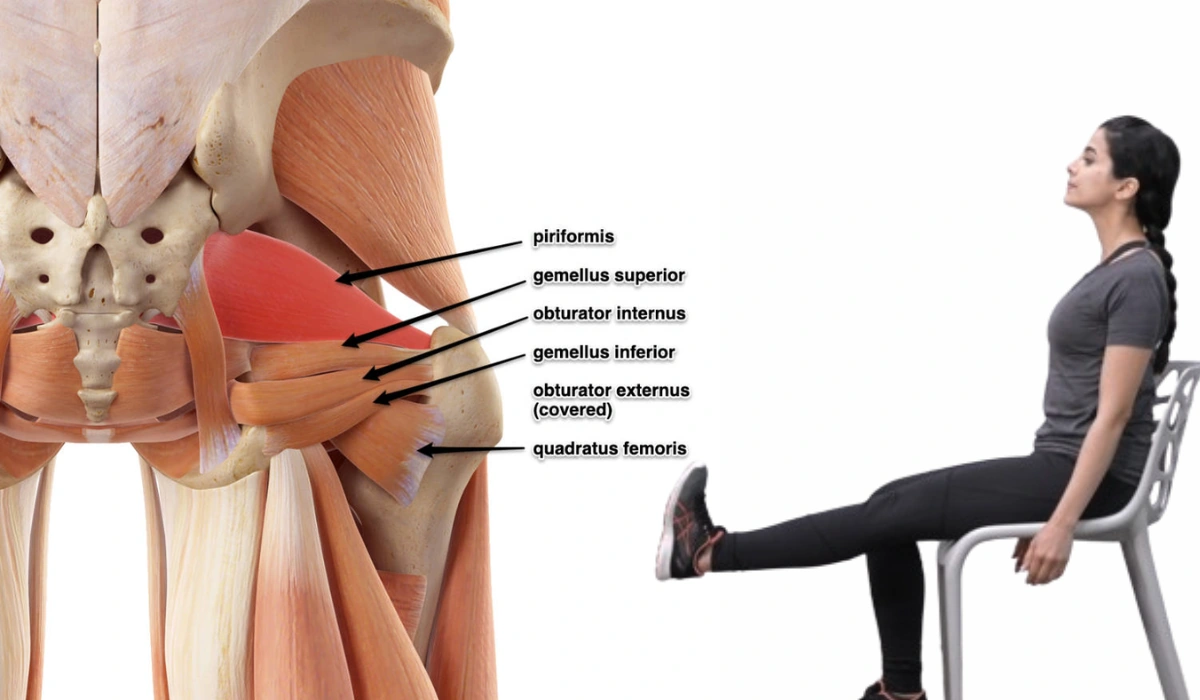Piriformis muscle syndrome is not very common, but many people still suffer from this condition. Thus, if you are suffering from pain in the central region of your buttocks and legs, then it can be piriformis muscle syndrome.
Also, when you suffer from this condition, you live a very uncomfortable life because you feel pain in standing, sitting, and even lying. Moreover, you cannot live a normal life if you are feeling pain in doing these normal activities.
Therefore, it is important to treat this condition, but how do you do this? Well, you can ask your doctor to recommend medications and physical therapies for this, but you also have to do exercises when you want to get rid of this condition completely. Thereby, learn some exercises for piriformis muscle syndrome that you can do at home or anywhere.
Get An Understanding Of Piriformis Muscle Syndrome
The Piriformis muscle is a deep hip muscle that kind of runs horizontally in your hip. Also, it has two main functions that depend on the position of your hip. First, when your hip is in a neutral position, it will help turn your toes and thighs out, which is known as external rotation.

However, when your hip is flexed, the function of the piriformis muscle changes. Thus, it is helpful for internal rotation and horizontal expansion of your thighs and knees when your hip is flexed. Moreover, the piriformis muscle also covers your sciatica nerve, which runs from your lower back down to your legs.
Thus, when your sciatica nerve gets pinched or irritated by the piriformis muscle, it can lead you to severe pain, which can be identified as piriformis muscle syndrome.
Exercises That Can Make Your Piriformis Muscle Stronger
1] Lying Piriformis Stretches Are Mostly Recommended
Stretches can improve your blood circulation, and they are important before you do any type of exercise. Also, you can manage your piriformis muscle syndrome by doing stretches. Piriformis stretches can be of different types, but lying ones can be very easy and effective. Also, all these stretches are simple, and you can perform them anywhere.
For lying piriformis stretches, lie down on a bench or your bed and bend both your knees. Further, cross the ankle of your one leg over the knee of the opposite leg. After that, grab the thigh of your opposite leg and pull it towards your chest. Finally, hold this position for a few seconds (30 seconds) and get back to your normal position.
2] Perform Standing And Seated Piriformis Stretches Daily
Standing and seated piriformis stretches can also help you manage your piriformis muscle syndrome. Thus, stand and put your ankle over the opposite leg to perform standing piriformis stretches. Further, lower your hip toward the ground and try to touch it with your arms. Afterward, get back to the normal position and follow this routine daily.
Moreover, when you want to perform seated piriformis stretches, sit in a chair and cross your ankle over the opposite leg. Further, keep your ankle over the opposite leg and push your knee downwards. Also, you can lean forward to feel stretch in your back and buttocks. Further, hold your position for a few seconds (30 seconds) and get back to the normal position.
3] Buttock Stretches Are Efficient
You can manage your piriformis muscle syndrome with bittock stretches. Thus, place your arms and knees on the ground to start this stretching exercise. Further, bring the foot (in which you are feeling pain) under your stomach. Then, twist your foot towards the other side near your hip and point the knee towards your shoulder.
After that, put your forearms on the ground and lower your head to touch the ground. Further, gently stretch your other leg straight behind you and make sure to keep your hip straight. Also, you can push your hip towards the ground to feel the stretch. Hold this position for a few seconds and get back to the normal position.
4] Bridges Are Simple Yet Effective
You may find bridges the most easy exercise to manage your piriformis muscle syndrome. Thus, lie down on your back with your knees bent when you want to start doing this exercise. Further, tighten your stomach muscles and raise your hips off the ground.
After that, squeeze your buttocks at the highest point and gently lower your hips back to the ground. Moreover, you should do this exercise twice a day for better results.

